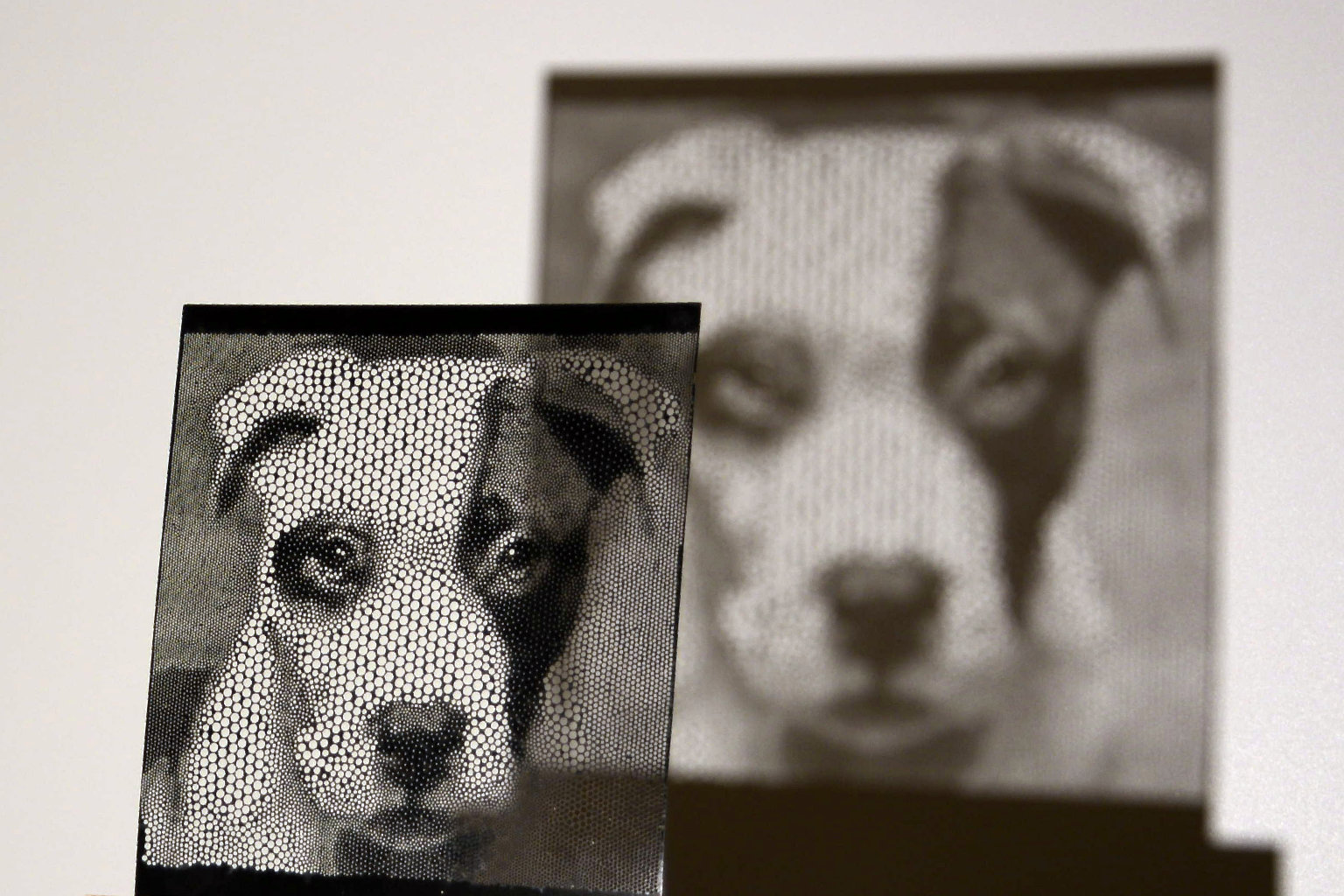Light Stippling and Halftoning
Master Thesis ETH Zurich, August 2016


Supervisors: Dr. Cengiz Öztireli, Prof. Dr. Markus Gross
Abstract
We present a method for the design of perforated planar surfaces, that project grayscale shadow images onto nearby walls when illuminated by a light source. Our goal is to compute a suitable distribution of holes with varying sizes that optimally reproduces a desired target image. We want to create a projection that has continuous tones while preserving as much spatial detail as possible. This is different from normal halftoning problems as we are limited by a set of fabrication constraints and the use of a light source introduces blurring of light footprints between adjacent holes.
Based on a set of reference renderings of different hole configurations, we define a suitable density function that guides the hole distribution process. Current methods use a pure blue noise based hole distribution, that can often lead to visible irregular artefacts in the final projected image. Therefore, we extend our method by using a new concept of distributions with adaptive correlations, that allows us to blend between both a blue noise and a regular hexagonal grid pattern. This leads to a denser hole packing and a better image reconstruction.
We use physically-based rendering to get accurate previews of the shadow images before fabricating a set of examples using laser cutting.